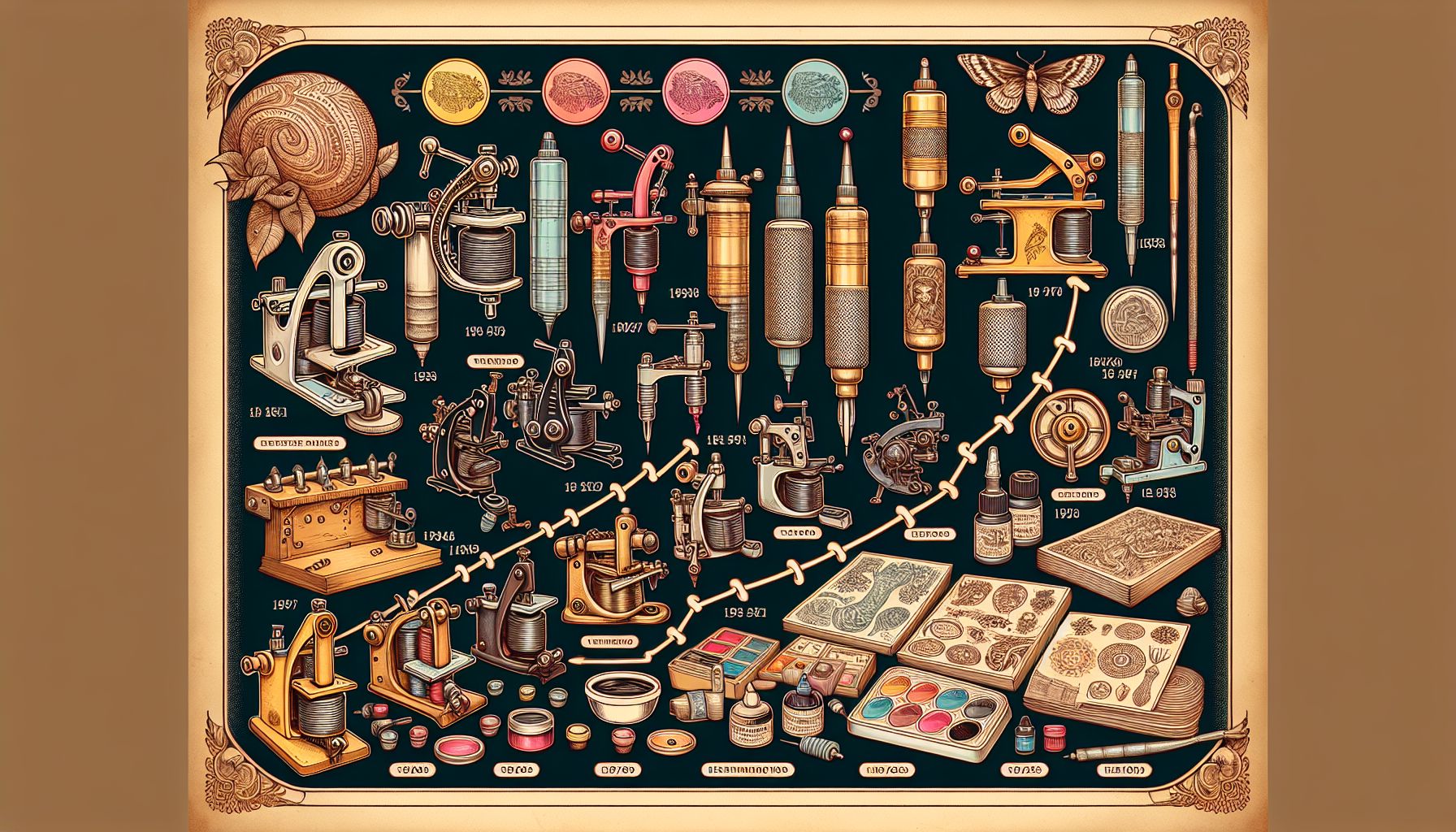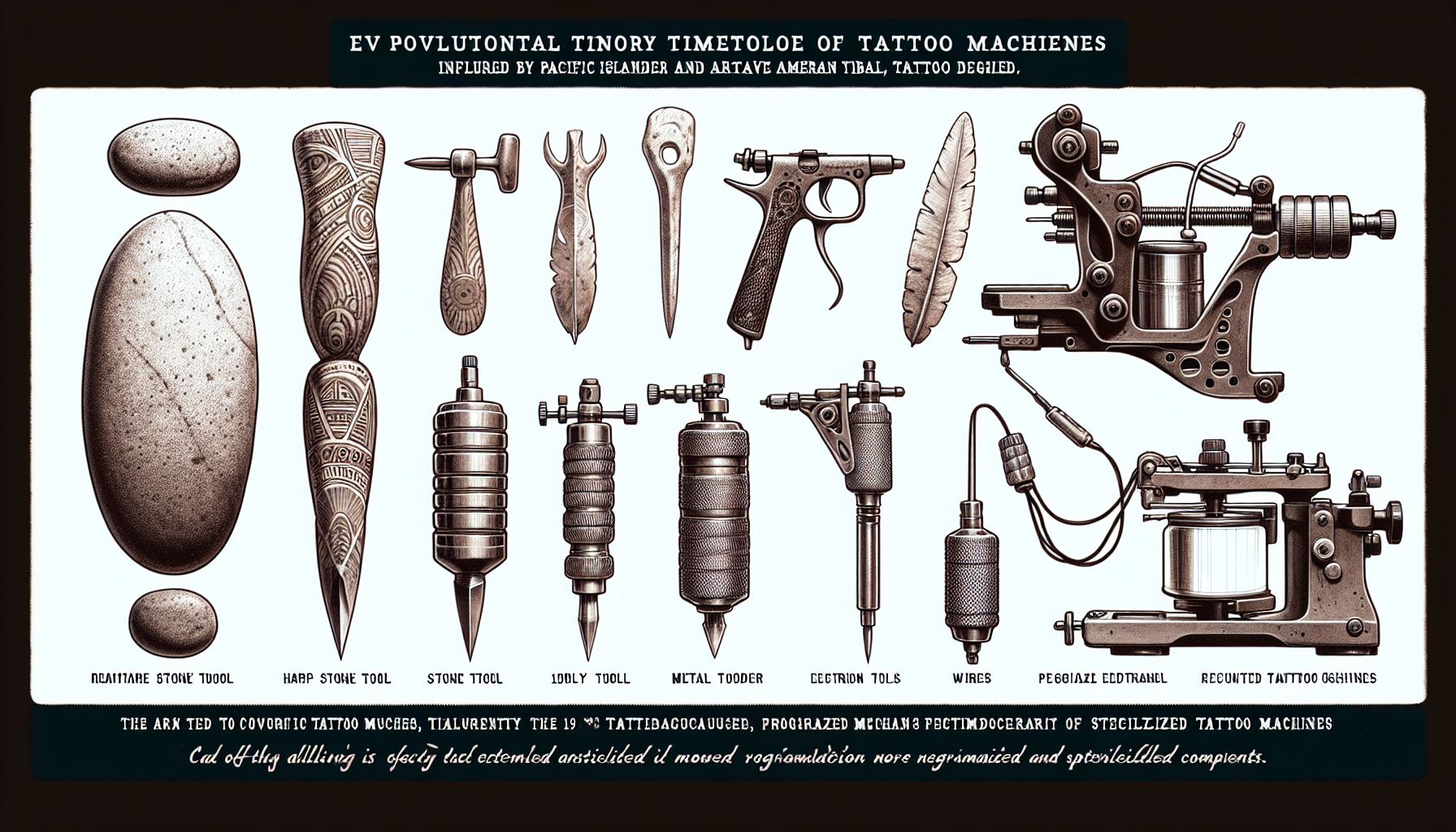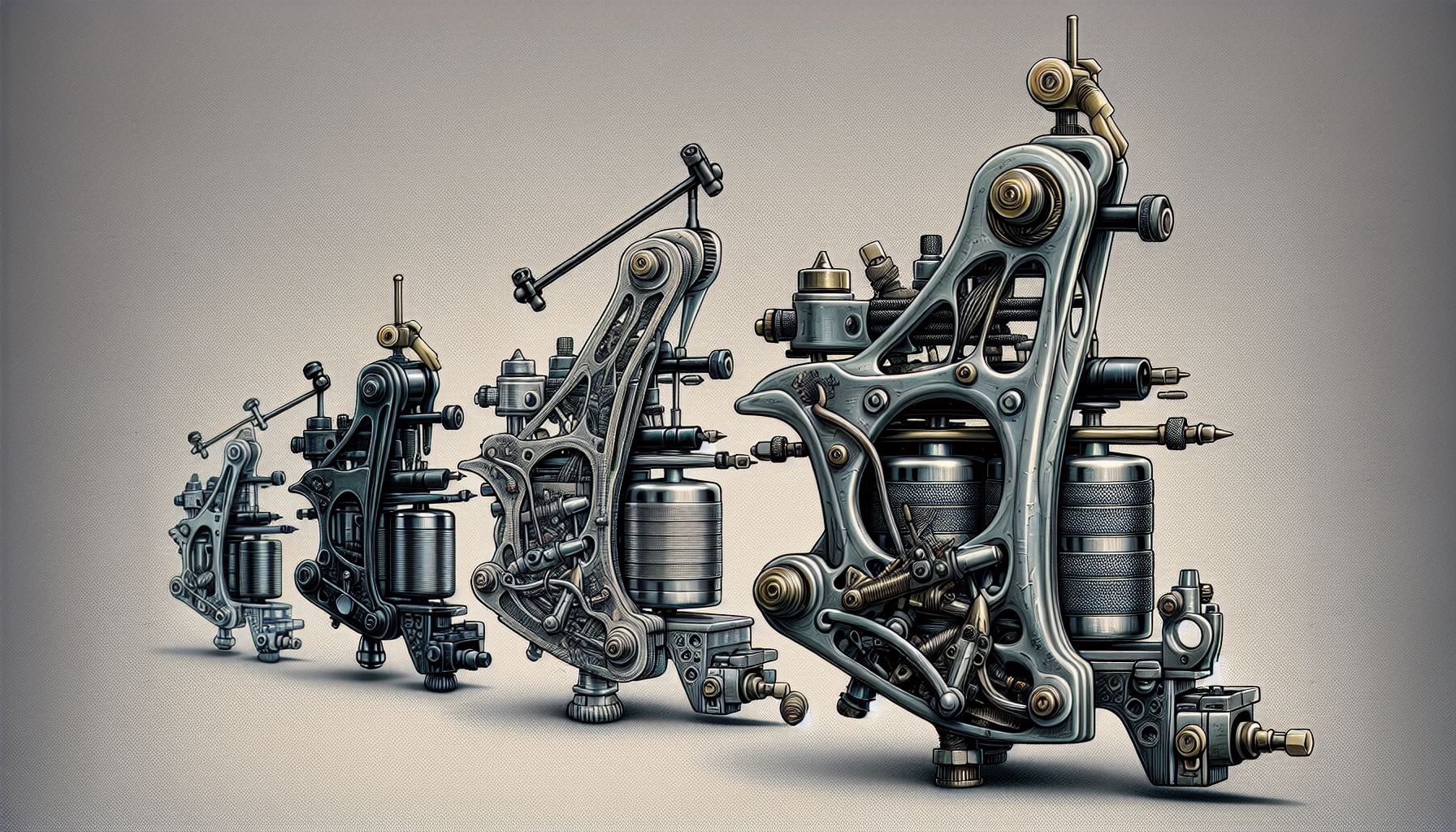The tattoo industry has undergone a significant metamorphosis over the decades, and at the crux of this evolution lies one of the most vital tattoo supplies: the tattoo machine. Tattoo machines have come a long way from the rudimentary tools of the past – not only in their technological advancements but also in their contribution to the artistry and efficiency of tattooing.
As a seasoned professional in the tattoo realm, the sight of a beautifully crafted tattoo machine is enough to send a wave of anticipation through me. The hum that emanates from its motor becomes a siren’s song to any artisan, as it’s not just a tool but an extension of the artist’s hand. Every machine I’ve held tells a story of innovation and adaptability in a fast-paced, ever-growing industry.
The Ink-Stained Beginnings
The tattoo machine’s origin tale takes us back to the late 19th century. Originally an invention stemmed from the mind of the illustrious Thomas Edison – although not intended for tattooing – the concept soon emerged into the capable hands of Samuel O’Reilly. This tattooing pioneer adapted the original design to suit the needs of the tattoo world, birthing the first electric tattoo machine.
From these prototypes, we’ve seen an impressive range of mechanics and designs. Coil machines, known for their signature buzz, have dominated the scene for many years. Built on an electromagnetic coil-based system, these machines were the workhorses of countless tattoo studios. Their reliability and adjustability made them a staple among tattoo supplies.
The Rise of the Rotary
Yet, as technology progressed, there was a seismic shift with the advent of rotary tattoo machines. Sleek and often quieter, these machines employ a small motor to move the needle. What captured my attention and that of my peers was the rotary’s versatility. The difference in the machines’ mechanics allows for a smoother, more controlled needle movement, which translates into less trauma on the skin.
I can recall the first time I used a rotary machine. It was like holding a piece of the future in my hand. There was less vibration compared to its coil counterpart, and it allowed me to work longer hours without the fatigue that often accompanied traditional machines. It was clear that this innovation was not just new; it was transformative.
The Cartridge System Revolution
Contemporary tattoo machines now often employ a cartridge system, a godsend in terms of hygiene and efficiency. Gone are the days of laborious needle setting and sterilization routines. Now, needles come perfectly configured and packaged, ready to pop into the machine. This not only saves time but also elevates safety standards, reducing the risk of cross-contamination – a concern that’s always been the focus of scrutiny in the tattoo community.
Adopting the cartridge system was a turning point for many artists, including myself. The transition in tattoo supplies meant artists could now switch between needle configurations at lightning speed, elevating the level of detail and finesse in their work.
Power Supplies and Digitalization
Power has always been at the heart of the operation, and power supplies themselves have gone digital. I’ve watched, with the faint buzz of a tattoo needle in the background, as bulky rheostats were replaced by compact, digital interfaces allowing for precise control over the machine’s speed and force. This leap forward in tattoo supplies slashed my prep time and let me focus on the art.
Touchscreens and Bluetooth connectivity seemed like they were from a different universe when they first arrived on the scene. Being able to adjust my machine’s parameters with a swiping gesture or even remotely was not just convenient—it felt like a new era had dawned upon us.
Inks and Colors
While the machine is the heart, the inks are the soul. Their quality, vibrancy, and longevity define a tattoo’s appeal. Over the years, I’ve watched ink evolve from a limited palette of questionable composition to a widespread spectrum of bright, lasting colors that are also vegan and cruelty-free. The innovation in tattoo supplies, particularly inks, means artists today can promise artworks that will stand the test of time both in terms of health standards and aesthetic longevity.
Conclusion: The Artist’s Companions
Being deeply embedded in the world of tattoo supplies, I cannot help but marvel at this progression. The continued innovation feeds into the industry’s potential for growth, enabling artists to push creative boundaries.
For those reading, whether you’re a veteran artist or a shop looking to upgrade your inventory, it’s essential to have the right tools at your disposal. Understand that each machine, ink set, and accessory brings something unique to the table. It’s not just about having the newest or the most advanced; it’s about understanding the capabilities and limitations of each tool and using them to elevate your work.
Remember, a tattoo machine is more than just a tool; it’s a partner in the dance of creation that unfolds on a living canvas. Whether coil or rotary, classic or cutting-edge, the right tattoo supplies can transform your work from good to unforgettable. And as our industry continues to evolve, so too will the machines we use – driving us toward an even more vibrant and intricate future for the art of tattooing.



